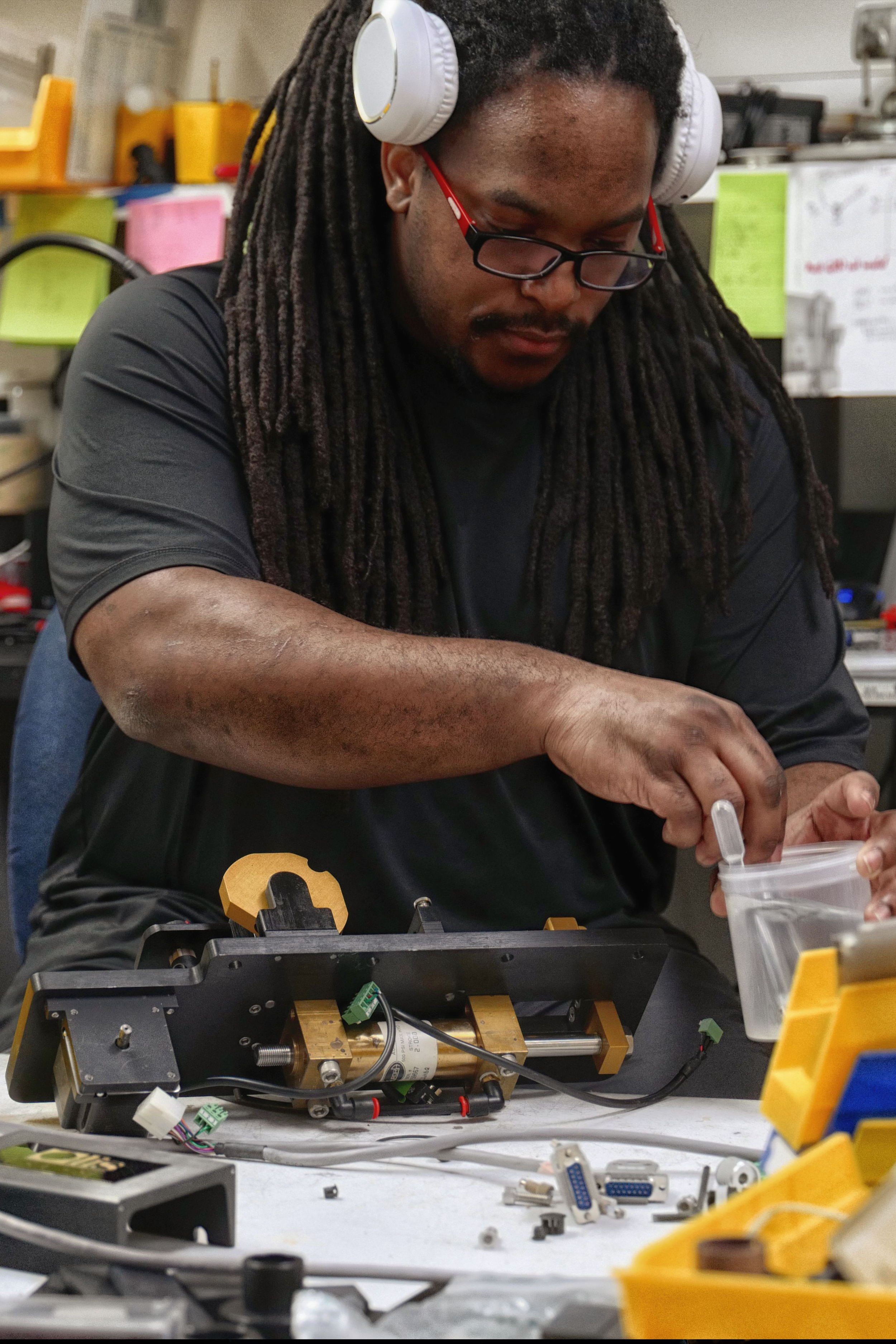What Does Uv/vis/nir Mean?
The Only Guide for Spectrophotometers
Table of ContentsEverything about Uv/visThe Ultimate Guide To Circular DichroismSpectrophotometers for DummiesUv/vis/nir for BeginnersFacts About Spectrophotometers Uncovered

Although spectrophotometry is most typically used to ultraviolet, visible, and infrared radiation, modern-day spectrophotometers can question broad swaths of the electromagnetic spectrum, consisting of x-ray, ultraviolet, noticeable, infrared, and/or microwave wavelengths. Spectrophotometry is a tool that depends upon the quantitative analysis of molecules depending upon just how much light is soaked up by colored compounds.
The 6-Minute Rule for Circularly Polarized Luminescence
A spectrophotometer is commonly utilized for the measurement of transmittance or reflectance of solutions, transparent or nontransparent solids, such as refined glass, or gases. Many biochemicals are colored, as in, they absorb visible light and for that reason can be determined by colorimetric treatments, even colorless biochemicals can frequently be converted to colored substances suitable for chromogenic color-forming reactions to yield compounds appropriate for colorimetric analysis.: 65 However, they can also be developed to determine the diffusivity on any of the noted light ranges that typically cover around 2002500 nm utilizing different controls and calibrations.
An example of an experiment in which spectrophotometry is used is the determination of the stability constant of a service. A particular chemical reaction within an option might occur in a forward and reverse direction, where reactants form products and items break down into reactants. Eventually, this chain reaction will reach a point of balance called a stability point.
The Facts About Circular Dichroism Uncovered
The quantity of light that travels through the option is a sign of the concentration of particular chemicals that do not permit light to travel through. The absorption of light is due to the interaction of light with the electronic and vibrational modes of molecules. Each type of particle has an individual set of energy levels associated with the makeup of its chemical bonds and nuclei and hence will absorb light of specific wavelengths, or energies, leading to unique spectral residential or commercial properties.
They are commonly used in lots of industries why not check here consisting of semiconductors, laser and optical manufacturing, printing and forensic examination, as well as in labs for the study of chemical substances. Spectrophotometry is typically used in measurements of enzyme activities, determinations of protein concentrations, determinations of enzymatic kinetic constants, and measurements of ligand binding reactions.: 65 Eventually, a spectrophotometer is able to identify, depending on the control or calibration, what compounds are present in a target and precisely how much through calculations of observed wavelengths.
Developed by Arnold O. Beckman in 1940 [], the spectrophotometer was created with the help of his associates at his business National Technical Laboratories founded in 1935 which would become Beckman Instrument Business and eventually Beckman Coulter. This would come as an option to the previously produced spectrophotometers which were unable to take in the ultraviolet correctly.
Circular Dichroism Things To Know Before You Get This
It would be discovered that this did not give acceptable outcomes, therefore in Design B, there was a shift from a glass to a quartz prism which enabled much better absorbance outcomes - UV/Vis (https://urlscan.io/result/3823bc3a-74b6-4d0f-8f09-522e983b4d26/). From there, Design C was born with a modification to the wavelength resolution which ended up having 3 units of it produced
It irradiates the sample with polychromatic light which the sample soaks up depending on its homes. It is transferred back by grating the photodiode array which identifies the wavelength region of the spectrum. Ever since, the creation and application of spectrophotometry devices has increased exceptionally and has turned into one of the most ingenious instruments of our time.

Some Known Facts About Circularly Polarized Luminescence.
Historically, spectrophotometers utilize a monochromator including a diffraction grating to produce the analytical spectrum. The grating can either be movable or repaired. If a single detector, such as a photomultiplier tube or photodiode is utilized, the grating can be scanned step-by-step (scanning spectrophotometer) so that the detector can measure the light intensity at each wavelength (which will represent each "step").
In such systems, the grating is fixed and the strength of each wavelength of light is determined by a various detector in the variety. When making transmission measurements, the spectrophotometer quantitatively compares the fraction of light that passes through a referral option and a test service, then electronically compares the intensities of the two signals and computes the percentage of transmission of the sample compared to the reference requirement.
